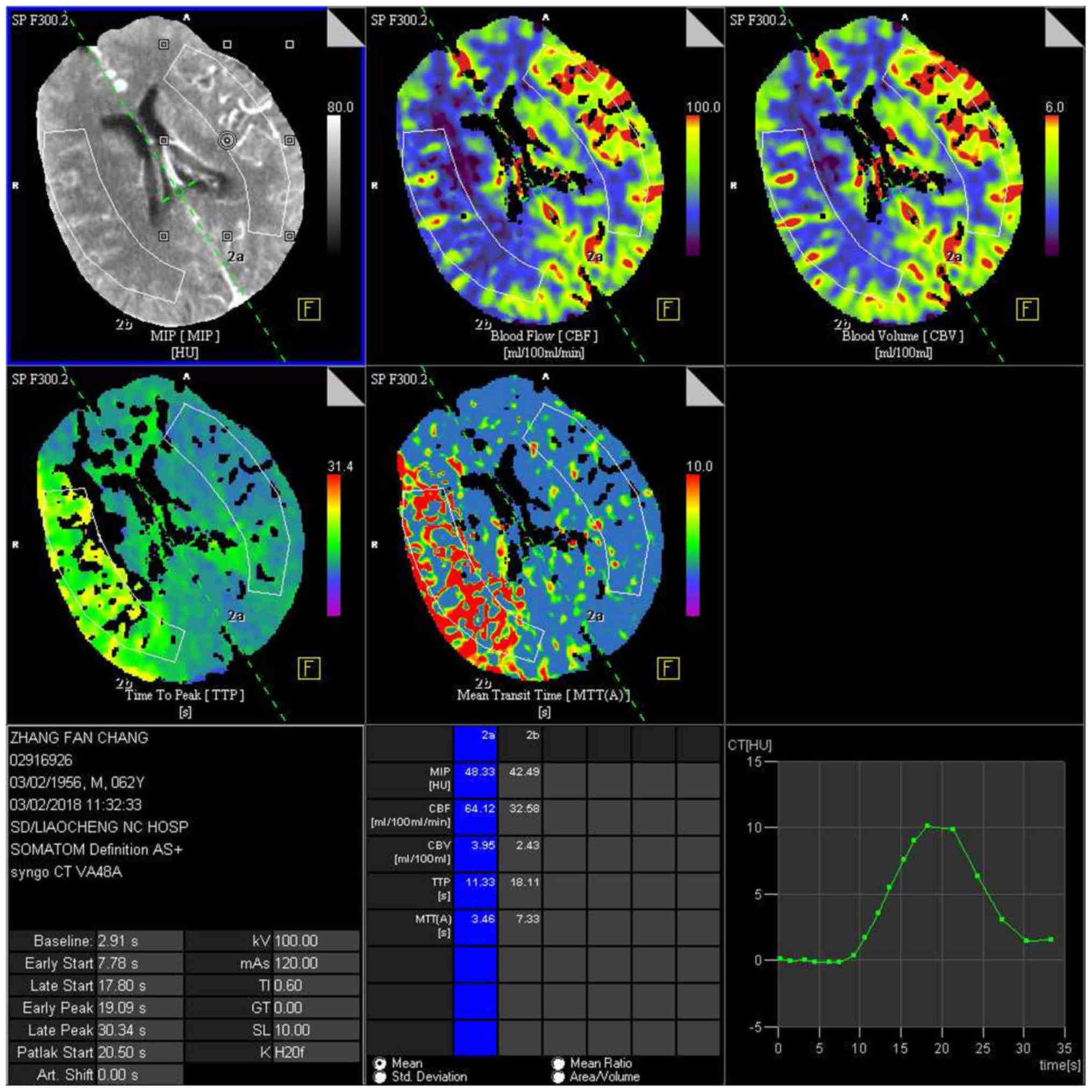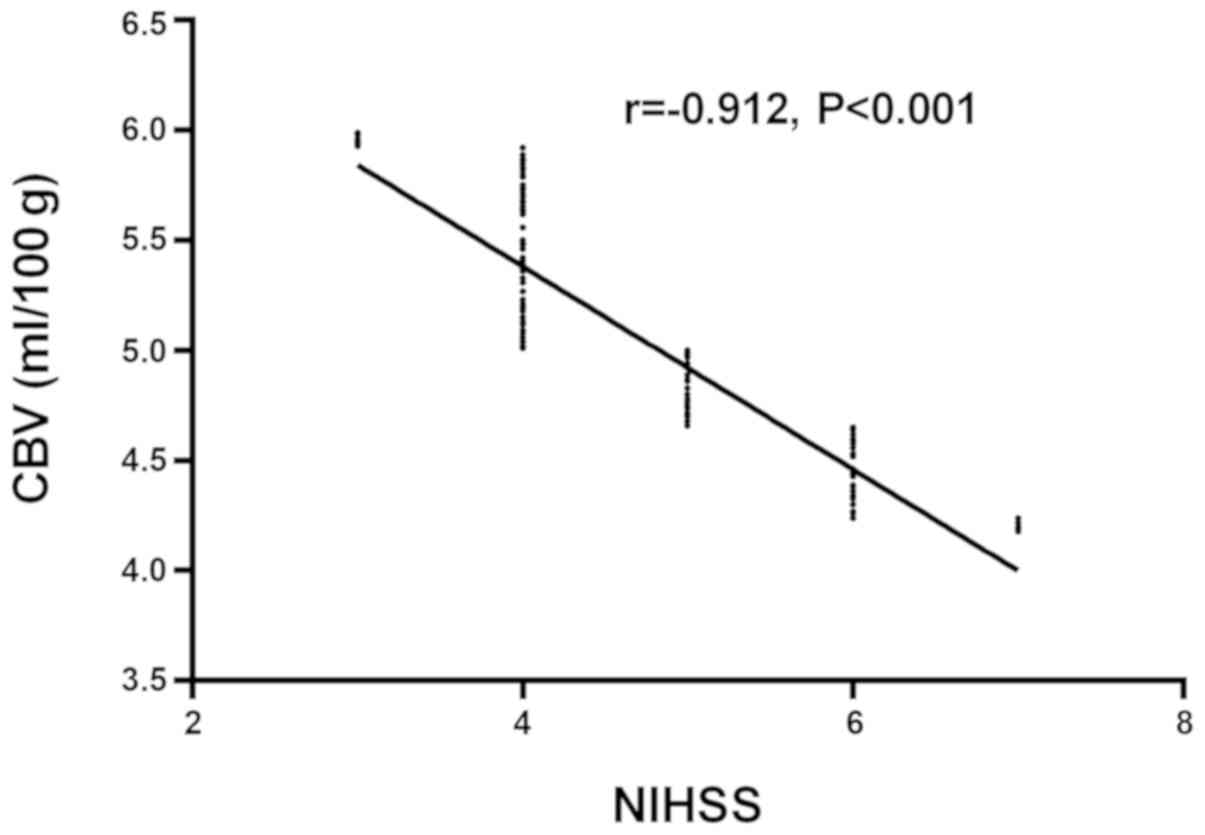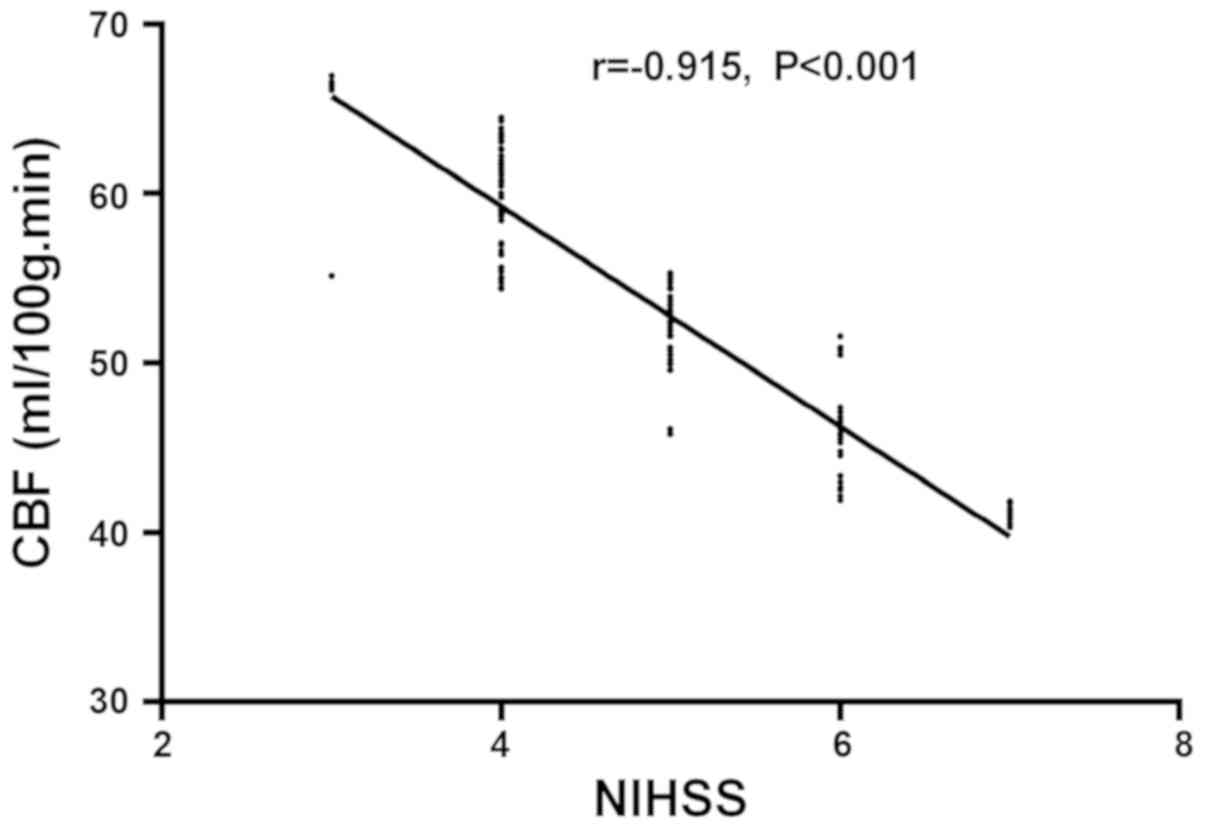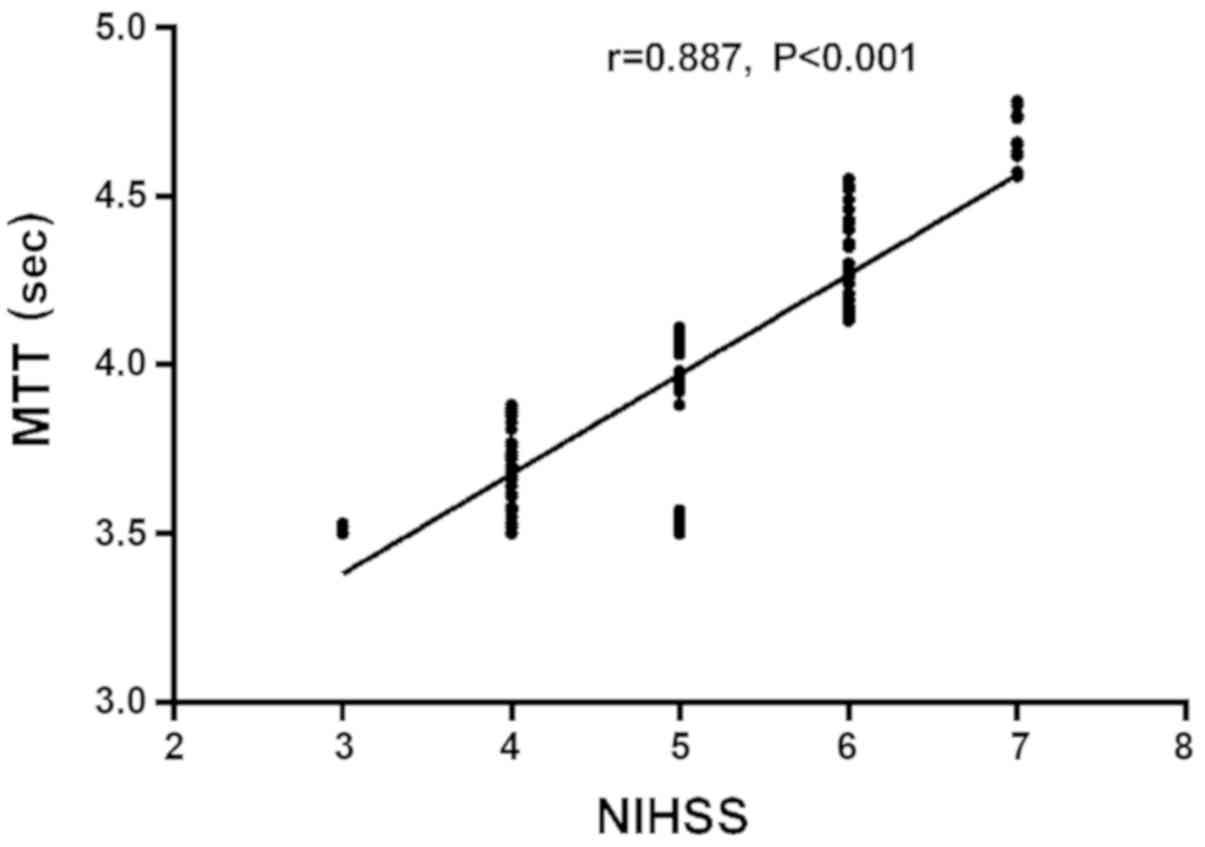|
1
|
Sun Y, Zhang G, Zhang Z, Yu P, Zhong H, Du
J and Wang Y: Novel multi-functional nitrones for treatment of
ischemic stroke. Bioorg Med Chem. 20:3939–3945. 2012. View Article : Google Scholar : PubMed/NCBI
|
|
2
|
Amarenco P, Lavallée PC, Labreuche J,
Albers GW, Bornstein NM, Canhão P, Caplan LR, Donnan GA, Ferro JM,
Hennerici MG, et al TIAregistry.org Investigators, : One-year risk
of stroke after transient ischemic attack or minor stroke. N Engl J
Med. 374:1533–1542. 2016. View Article : Google Scholar : PubMed/NCBI
|
|
3
|
Jauch EC, Saver JL, Adams HP Jr, Bruno A,
Connors JJ, Demaerschalk BM, Khatri P, McMullan PW Jr, Qureshi AI,
Rosenfield K, et al American Heart Association Stroke Council;
Council on Cardiovascular Nursing; Council on Peripheral Vascular
Disease; Council on Clinical Cardiology, : Guidelines for the early
management of patients with acute ischemic stroke: a guideline for
healthcare professionals from the American Heart
Association/American Stroke Association. Stroke. 44:870–947. 2013.
View Article : Google Scholar : PubMed/NCBI
|
|
4
|
Minnerup J, Wersching H, Teuber A,
Wellmann J, Eyding J, Weber R, Reimann G, Weber W, Krause LU, Kurth
T, et al REVASK Investigators, : Outcome after thrombectomy and
intravenous thrombolysis in patients with acute ischemic stroke: a
prospective observational study. Stroke. 47:1584–1592. 2016.
View Article : Google Scholar : PubMed/NCBI
|
|
5
|
Joux J, Olindo S, Girard-Claudon A,
Chausson N, Saint-Vil M, Signate A, Edimonana M, Jeannin S,
Aveillan M, Cabre P, et al: Prehospital transfer medicalization
increases thrombolysis rate in acute ischemic stroke. A French
stroke unit experience. Clin Neurol Neurosurg. 115:1583–1585. 2013.
View Article : Google Scholar : PubMed/NCBI
|
|
6
|
Powers WJ, Rabinstein AA, Ackerson T,
Adeoye OM, Bambakidis NC, Becker K, Biller J, Brown M, Demaerschalk
BM, Hoh B, et al American Heart Association Stroke Council, : 2018
guidelines for the early management of patients with acute ischemic
stroke: a guideline for healthcare professionals from the American
Heart Association/American Stroke Association. Stroke. 49:e46–e110.
2018. View Article : Google Scholar : PubMed/NCBI
|
|
7
|
Wintermark M: Brain perfusion-CT in acute
stroke patients. Eur Radiol. 15 (Suppl 4):D28–D31. 2005. View Article : Google Scholar : PubMed/NCBI
|
|
8
|
Lövblad KO and Baird AE: Computed
tomography in acute ischemic stroke. Neuroradiology. 52:175–187.
2010. View Article : Google Scholar : PubMed/NCBI
|
|
9
|
Wang XC, Gao PY, Xue J, Liu GR and Ma L:
Identification of infarct core and penumbra in acute stroke using
CT perfusion source images. AJNR Am J Neuroradiol. 31:34–39. 2010.
View Article : Google Scholar : PubMed/NCBI
|
|
10
|
Borst J, Berkhemer OA, Roos YB, van Bavel
E, van Zwam WH, van Oostenbrugge RJ, van Walderveen MA, Lingsma HF,
van der Lugt A, Dippel DW, et al: MR CLEAN investigators: value of
computed tomographic perfusion-based patient selection for
intra-arterial acute ischemic stroke treatment. Stroke.
46:3375–3382. 2015. View Article : Google Scholar : PubMed/NCBI
|
|
11
|
Vagal A, Menon BK, Foster LD, Livorine A,
Yeatts SD, Qazi E, d'Esterre C, Shi J, Demchuk AM, Hill MD, et al:
Association between CT angiogram collaterals and CT perfusion in
the interventional management of stroke III trial. Stroke.
47:535–538. 2016. View Article : Google Scholar : PubMed/NCBI
|
|
12
|
Austein F, Riedel C, Kerby T, Meyne J,
Binder A, Lindner T, Huhndorf M, Wodarg F and Jansen O: Comparison
of perfusion CT software to predict the final infarct volume after
thrombectomy. Stroke. 47:2311–2317. 2016. View Article : Google Scholar : PubMed/NCBI
|
|
13
|
Demchuk AM, Menon BK and Goyal M:
Comparing vessel imaging: noncontrast computed tomography/computed
tomographic angiography should be the new minimum standard in acute
disabling Stroke. Stroke. 47:273–281. 2016. View Article : Google Scholar : PubMed/NCBI
|
|
14
|
Flottmann F, Broocks G, Faizy TD, Ernst M,
Forkert ND, Grosser M, Thomalla G, Siemonsen S, Fiehler J and
Kemmling A: CT-perfusion stroke imaging: a threshold free
probabilistic approach to predict infarct volume compared to
traditional ischemic thresholds. Sci Rep. 7:66792017. View Article : Google Scholar : PubMed/NCBI
|
|
15
|
Guidelines for diagnosis and management of
cardiovascular sequelae in Kawasaki disease (JCS 2003). J Cardiol.
43:263–283. 2004.(In Japanese). PubMed/NCBI
|
|
16
|
Kalaria RN: Cerebrovascular disease and
mechanisms of cognitive impairment: evidence from
clinicopathological studies in humans. Stroke. 43:2526–2534. 2012.
View Article : Google Scholar : PubMed/NCBI
|
|
17
|
Allen CL and Bayraktutan U: Risk factors
for ischaemic stroke. Int J Stroke. 3:105–116. 2008. View Article : Google Scholar : PubMed/NCBI
|
|
18
|
Bergström L, Irewall AL, Söderström L,
Ögren J, Laurell K and Mooe T: One-year incidence, time trends, and
predictors of recurrent ischemic stroke in Sweden from 1998 to
2010: an Observational Study. Stroke. 48:2046–2051. 2017.
View Article : Google Scholar : PubMed/NCBI
|
|
19
|
Ntaios G, Dziedzic T, Michel P,
Papavasileiou V, Petersson J, Staykov D, Thomas B and Steiner T;
European Stroke Organisation, : European Stroke Organisation (ESO)
guidelines for the management of temperature in patients with acute
ischemic stroke. Int J Stroke. 10:941–949. 2015. View Article : Google Scholar : PubMed/NCBI
|
|
20
|
Arba F, Inzitari D, Ali M, Warach SJ, Luby
M and Lees KR; STIR/VISTA Imaging Collaboration, : Small vessel
disease and clinical outcomes after IV rt-PA treatment. Acta Neurol
Scand. 136:72–77. 2017. View Article : Google Scholar : PubMed/NCBI
|
|
21
|
Akutagawa N, Sadashima S, Nakagaki H,
Nagano S and Yoshimura T: Intracerebral hemorrhage after
intravenous recombinant tissue plasminogen activator (rt-PA)
therapy for acute cerebral infarction in a patient with
ANCA-associated vasculitis. Rinsho Shinkeigaku. 57:454–456. 2017.
View Article : Google Scholar : PubMed/NCBI
|
|
22
|
Wang J, Wu N, Cham MD and Song Y: Tumor
response in patients with advanced non-small cell lung cancer:
Perfusion CT evaluation of chemotherapy and radiation therapy. AJR
Am J Roentgenol. 193:1090–1096. 2009. View Article : Google Scholar : PubMed/NCBI
|
|
23
|
Yoo AJ, Berkhemer OA, Fransen PSS, van den
Berg LA, Beumer D, Lingsma HF, Schonewille WJ, Sprengers MES, van
den Berg R, van Walderveen MAA, et al: MR CLEAN investigators:
effect of baseline Alberta Stroke Program Early CT Score on safety
and efficacy of intra-arterial treatment: a subgroup analysis of a
randomised phase 3 trial (MR CLEAN). Lancet Neurol. 15:685–694.
2016. View Article : Google Scholar : PubMed/NCBI
|
|
24
|
Finlayson O, John V, Yeung R, Dowlatshahi
D, Howard P, Zhang L, Swartz R and Aviv RI: Interobserver agreement
of ASPECT score distribution for noncontrast CT, CT angiography,
and CT perfusion in acute stroke. Stroke. 44:234–236. 2013.
View Article : Google Scholar : PubMed/NCBI
|
|
25
|
Yu Y, Han Q, Ding X, Chen Q, Ye K, Zhang
S, Yan S, Campbell BC, Parsons MW, Wang S, et al: Defining core and
penumbra in ischemic stroke: A voxel- and volume-based analysis of
whole brain CT perfusion. Sci Rep. 6:209322016. View Article : Google Scholar : PubMed/NCBI
|
|
26
|
van Seeters T, Biessels GJ, Kappelle LJ,
van der Schaaf IC, Dankbaar JW, Horsch AD, Niesten JM, Luitse MJ,
Majoie CB, Vos JA, et al Dutch acute stroke study (DUST)
investigators, : The prognostic value of CT angiography and CT
perfusion in acute ischemic stroke. Cerebrovasc Dis. 40:258–269.
2015. View Article : Google Scholar : PubMed/NCBI
|
|
27
|
Ma QF, Jia JP, Wu J, Xu EH, Yu YY, Lu J
and Zhang M: Relationship between computed tomography perfusion
imaging and prognosis in hyperacute cerebral infarction. Zhonghua
Yi Xue Za Zhi. 91:3337–3340. 2011.(In Chinese). PubMed/NCBI
|


















